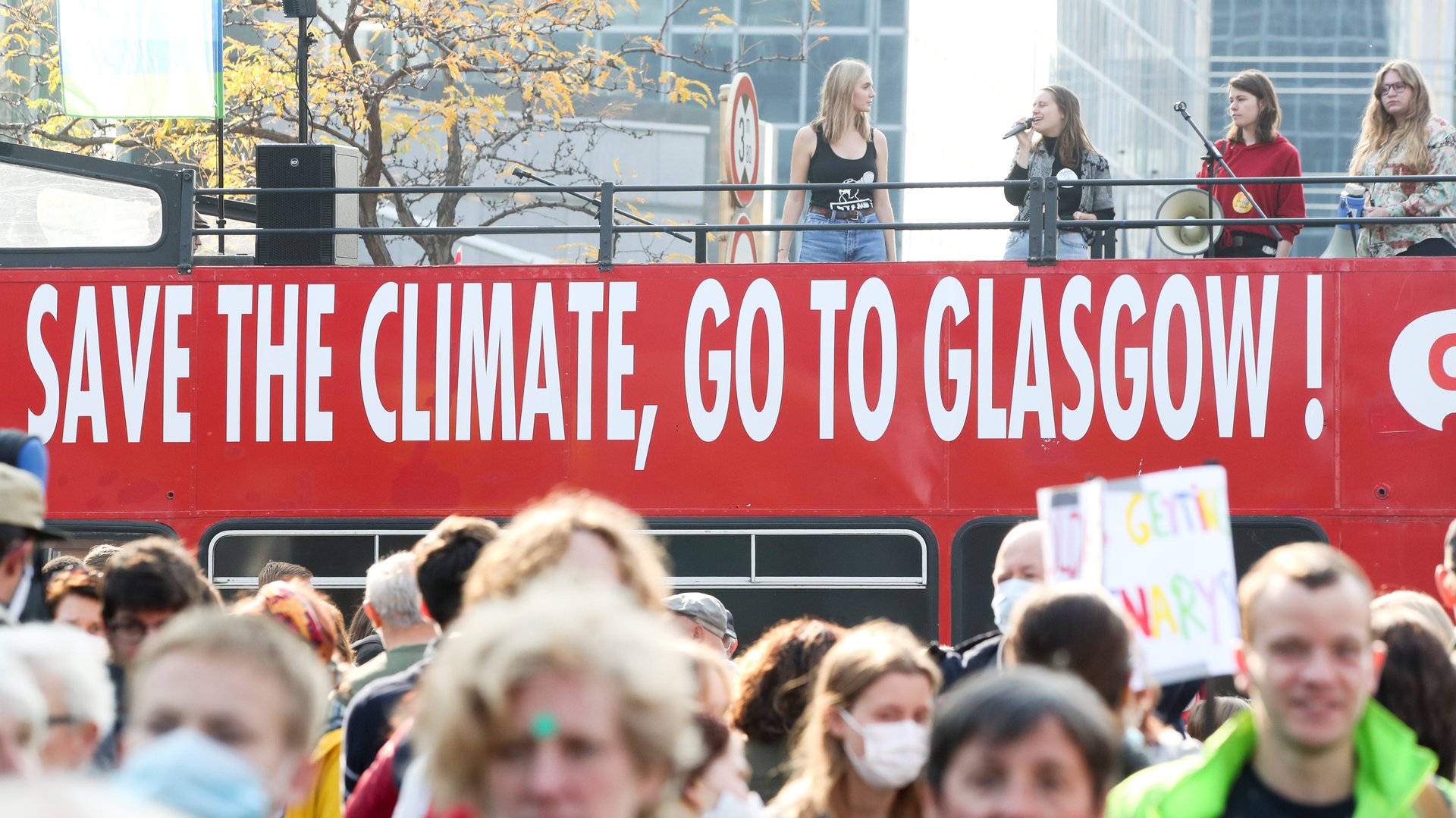What does COP26 stand for and why it matters
The UN will bring together 120 national leaders at the COP26 climate summit, held in Glasgow from Oct. 31 to Nov. 12, to find ways to limit global warming. It comes at a pivotal moment for the planet as countries and companies hope to hit the gas on the transition to a fossil-fuel-free economy.


The UN will bring together 120 national leaders at the COP26 climate summit, held in Glasgow from Oct. 31 to Nov. 12, to find ways to limit global warming. It comes at a pivotal moment for the planet as countries and companies hope to hit the gas on the transition to a fossil-fuel-free economy.
Why does COP26 matter?
Extreme weather events are on the rise. Without swift action, climate change is expected to lead to catastrophic warming. That’s adding urgency to the goal of achieving net-zero emissions, a target now adopted by 63 nations, by about mid-century. But the global reliance on fossil fuels to meet energy needs is slowing progress. Only the tiny African nation of Gambia is taking the necessary steps to decarbonize in line with a 1.5ºC climate target specified under the Paris Agreement. US President Joe Biden has had to pare back his climate agenda due to domestic politics. Several developing nations have stated that rich countries put the planet on course for catastrophic warming as they industrialized, claiming that demands of them to cease such practices now is unfair and will bring their economic progress to a halt.
What will be discussed at COP26?
The COP—an acronym for “conference of parties”—is in its 26th round bringing together world leaders and delegations to discuss all the gnawing issues holding countries back from curbing emissions and meeting the goal of limiting global warming to 1.5ºC above pre-industrial levels by 2100.
This year, delegations from most of the 195 nations that signed on to the Paris Agreement in 2015 will negotiate rules for a global carbon market, look to raise funds for climate action, and announce new emission targets. The summit is also likely to see discussions to ascertain whether rich countries will pay to help poorer countries reduce emissions.
Who will attend COP26?
COP26 is the biggest climate summit since the 2015 Paris Agreement. At least 120 heads of state are expected to attend the conference at the start of the summit before country delegations meet to iron out details and negotiate terms. Notable absentees will include China’s Xi Jinping, Russian President Vladimir Putin, and Brazilian President Jair Bolsonaro. With Covid-19 restrictions in place, several leaders will connect via video link.
What are the goals of the COP26 meeting?
One of the primary goals of the summit will be to accelerate the end of fossil fuel, especially coal. But the ongoing energy crisis has meant countries like China remain heavily reliant on coal. Another key goal of the summit will be to raise cash to help developing nations transition to an economy free of fossil-fuels. Countries will also try to fix global rules for pricing and trading carbon. Here’s a breakdown:
- Move from negotiation to action: Most COPs since the first one in Berlin in 1995 have centered on negotiation. Now it’s time for action. Countries have mostly agreed on the framework. Now they must deliver on their promises to keep temperature increases “well below” 2°C (3.6°F) compared to pre-industrial levels.
- Carbon market mechanisms: Negotiators are hammering out the rules for governments and private entities to generate and purchase carbon credits (reductions or removals of GHG) to meet its emission targets.
- Funding for “Loss and damage:” The Paris Agreement allows for loss and damage payments to vulnerable countries, but no consensus exists on exactly how to fund these. This is a critical point for least-developed nations.
- $100 billion: That’s how much climate financing rich countries agreed to raise annually by 2020, money that goes toward decarbonization and adaptation efforts in poor countries COP26 is likely to set a new climate finance target for 2025.
- Nature-based solutions: Negotiators will tackle how nature (forests, agriculture and ecosystems) can be used as a climate solution for absorbing carbon and for protecting against climate impacts.